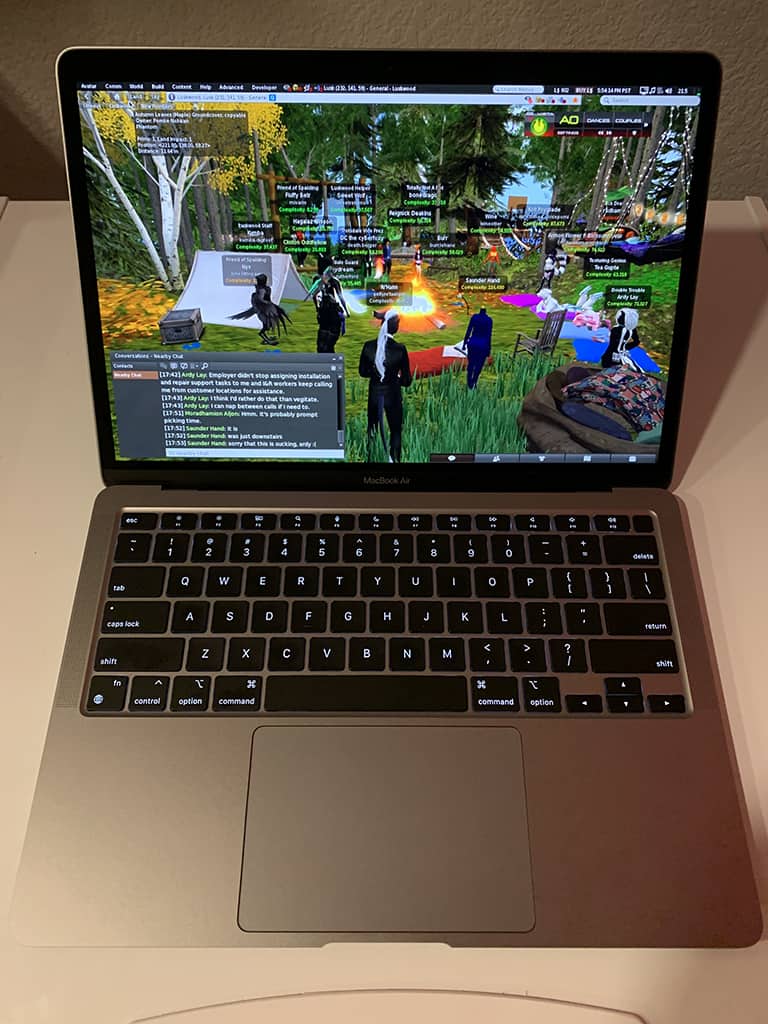After what was undoubtedly a harrowing trip from China, my new M1-based MacBook Air arrived today.
By now there are countless reviews of the M1 architecture available online, so I’ll make mine brief…
It’s eerily good…
The M1 manages to bring back some of that sense of computer wonder I’ve not had since the early 80’s… I can’t really wrap my head around how it’s doing what it’s doing. I know all about 5nm process, RISC systems, unified memory architectures, PCIe gen4, and on and on — but the M1 still manages to have some kind of voodoo that boggles me.
I mean, no moving parts at all, no real heat generation, and no wires — and I was running around in World of Warcraft at well over 60fps with my usual graphic settings and showing 6 hours of battery available.
WoW is a native ARM app though — Blizzard didn’t waste any time coding for the new architecture. A real test would be something not written for ARM that would need to use Rosetta 2 translation to run…
Enter SecondLife.
I’ve used SecondLife, specifically Luskwood in SecondLife, as something of a torture test for any new hardware with rendering capability for almost two decades. See, SL is an unoptimized mess when it comes to rendering because geometry, textures, and animations are left up to the people in the system — and they’re not exactly interested in things like render budgets or resource envelopes.
So, something like my old bleeding edge gaming rig with a thousand watt power supply to run a Titan-XP video card and a liquid cooled i7-7700K CPU typically saw 40-50 FPS in Luskwood. And was generally a space-heater whilst doing it…
The M1 MacBook Air — again passively cooled and running on battery — was averaging around 25 FPS in Luskwood with similar settings.

That would actually be impressive for a desktop windows machine with discrete graphics — but the MBA is a passively cooled SOC… And what makes it weirder is that level of performance was still showing around 6 hours of available battery.
And remember, this is with the 30-ish percent hit for code translation as well…
That’s just creepy.